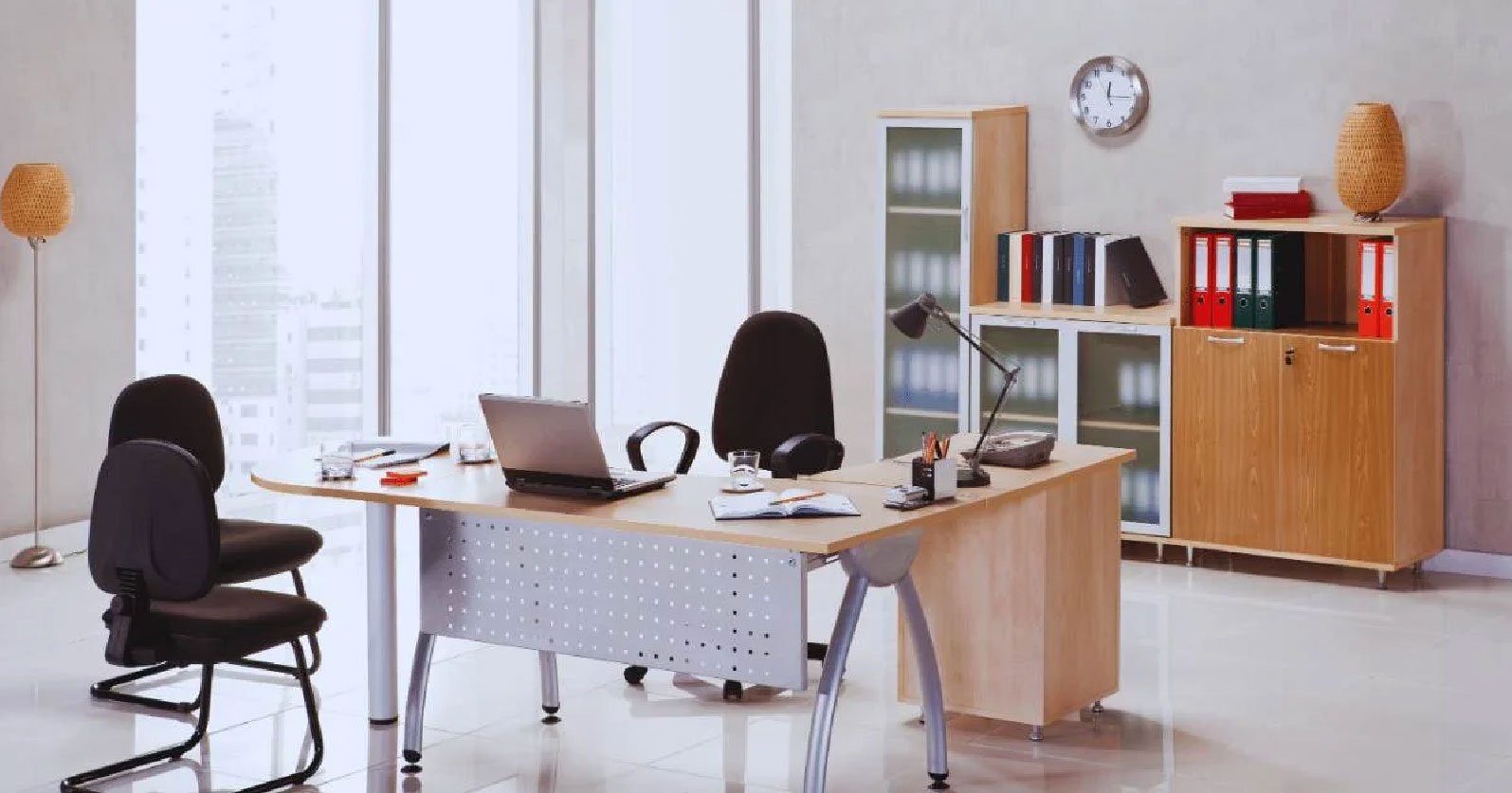Furniture
How to Match Office Chairs to Different Workspaces in Your Fitout

When planning an office fitout, one of the most crucial considerations is selecting the right office furniture, and specifically, the right office chairs. The chair is the cornerstone of any workspace, whether it’s for long hours of focused work, collaborative meetings, or quick stopovers for admin tasks. The correct office chair not only ensures comfort and productivity but also ties into the overall aesthetic and functional design of your office.
Office chairs come in many shapes, sizes, and styles, and understanding how to match them to the needs of various workspaces can significantly improve the experience of everyone in the office. It’s not just about choosing something that looks good; the right office chair must support the way employees will use the space, whether it’s individual desks, collaborative zones, or meeting areas. This is especially important in modern office designs where various environments blend into one, making a thoughtful selection of office furniture essential.
In a comprehensive office fitout, it’s important to consider more than just the appearance of the chairs. Ergonomics, durability, functionality, and comfort should also be at the forefront of any decision. Workspaces can vary in terms of layout, traffic flow, and purpose, so it’s essential to understand the type of chair that will best complement each area. From adjustable task chairs to sleek visitor chairs, this guide will provide insights into matching office chairs to different workspaces in your fitout.
1. Task-Oriented Workspaces: Prioritising Comfort and Adjustability
For task-based workspaces, such as personal desks or dedicated workstations, comfort and adjustability are essential. Employees spend long hours seated at these desks, often engaging in focused work that requires high levels of concentration. In such spaces, the office chairs must provide ample support for the lower back, promote good posture, and offer adjustability to accommodate individual preferences.
Ergonomic task chairs are the best choice for these workspaces. These chairs feature adjustable height, backrests, armrests, and lumbar support, making them suitable for a range of body types and work habits. A good ergonomic chair reduces the risk of musculoskeletal issues and helps employees maintain proper posture throughout the day. Chairs with breathable fabric or mesh backrests also enhance comfort by promoting air circulation, preventing the user from overheating, especially in high-energy environments.
When choosing office chairs for these workspaces, it’s also worth considering the material and design. A high-back chair offers better neck support for employees who may spend hours in front of their computers, while a mid-back chair may be more appropriate for tasks that require more mobility and a less restricted range of movement. Additionally, consider the aesthetics of the office chair to match the overall design of the space. Sleek, modern designs can enhance a contemporary fitout, while more traditional options might be suitable for formal environments.
2. Collaborative Spaces: Flexibility and Mobility
Collaborative spaces in an office fitout require a different type of office chair than task-oriented workstations. These areas are designed for teamwork, brainstorming, and group discussions, and as such, the furniture must encourage flexibility, mobility, and interaction. Office chairs in collaborative spaces should facilitate easy movement and allow people to shift from one area of the space to another.
For collaborative workspaces, lightweight task chairs or conference-style seating are ideal. These chairs should be easy to move, stack, or reposition to accommodate shifting group dynamics. Options with wheels or casters allow for greater mobility and flexibility, ensuring that team members can quickly adapt the space to their needs. Furthermore, chairs that swivel provide extra comfort and freedom of movement during brainstorming sessions or meetings.
In terms of design, the office chairs in collaborative spaces should align with the overall theme of the area, whether it’s formal or casual. In a more relaxed environment, bright colours or unique shapes can create an energising and inspiring atmosphere. For more formal or corporate settings, choose chairs with a more neutral palette and clean lines, which contribute to a professional environment without sacrificing comfort.
3. Executive Offices: Style Meets Function
Executive offices require office chairs that not only offer comfort but also exude professionalism and style. These spaces are often used for decision-making, meetings with clients, or strategic planning, so the office chair should reflect the importance of the role. In this case, high-back executive chairs with plush cushioning and premium materials like leather are ideal choices.
The executive chair is a critical piece of office furniture in these spaces. Not only does it need to be comfortable and ergonomic, but it also serves as a statement piece that reflects the status of the individual occupying it. Leather executive chairs, for example, are often associated with luxury and elegance. Additionally, chairs with advanced ergonomic features, such as built-in lumbar support and memory foam padding, are key to ensuring that executives can work comfortably for long hours while maintaining good posture.
In executive spaces, it’s important to select office chairs that complement the décor and design of the room. The chair should harmonise with the office desk, storage, and overall design theme. A dark wood or metal frame with leather upholstery can project authority and prestige, while minimalist styles with high-tech features might appeal to those in modern, forward-thinking industries. The chair’s functionality must blend seamlessly with its role as a piece of executive furniture, contributing to both the productivity and the overall atmosphere of the office.
4. Visitor and Meeting Spaces: Comfort and Aesthetic Appeal
In visitor or meeting spaces, the function of the office chair is often less about long-term comfort and more about creating a welcoming and professional atmosphere. Visitors or clients may only spend short amounts of time in these chairs, but the quality of the seating can still influence their perception of your business.
For visitor and meeting rooms, chairs should be both stylish and functional, offering a balance between comfort and visual appeal. Conference chairs with durable upholstery, such as fabric or leather, are ideal for these spaces. Opt for chairs that offer a supportive yet not overly cushioned seating experience. This ensures that visitors or clients are comfortable, but not so relaxed that they become disengaged during meetings.
Additionally, the aesthetic appeal of the chairs is crucial in making a positive impression. Sleek, contemporary designs with a neutral colour palette will complement most modern office fitouts. If your office has a more formal or traditional aesthetic, then chairs with more classic designs and materials, such as wood frames or leather upholstery, may be more appropriate. These chairs should also be easy to stack or move around to accommodate different types of meetings, whether formal or informal.
5. Breakout Areas: Casual and Comfortable Seating
Breakout areas are designed for relaxation, casual meetings, or short breaks. In these spaces, comfort is paramount, as employees and visitors should feel at ease while they take a break from their regular tasks. Soft lounge chairs or ergonomic lounge seating work well in these areas, providing a comfortable, supportive place to sit and unwind.
Incorporating casual seating into breakout spaces helps create a more laid-back environment, promoting creativity, collaboration, and relaxation. These chairs should have a more relaxed style than those in task-oriented workspaces, but they still need to offer support to avoid causing discomfort during longer periods of sitting. Using lounge chairs with soft upholstery and cushions can add warmth and texture to these spaces, contributing to a more inviting and comfortable atmosphere.
6. Hot Desks and Flexible Workspaces: Versatility and Adaptability
With the rise of flexible work arrangements, many modern offices incorporate hot desking or flexible workspaces where employees do not have assigned desks. Office chairs in these spaces should offer versatility, ease of adjustment, and comfort to suit a wide range of individuals who may only be using the space temporarily.
For flexible workspaces, lightweight, adjustable chairs with simple yet durable designs are ideal. These chairs should be easy to adjust for different users and offer sufficient support to accommodate various body types and work habits. Stackable chairs or task chairs with casters are great choices for these spaces, as they allow easy reconfiguration of the workspace to accommodate the flow of employees.
The design should remain neutral to blend into different office environments, and the material choice should be durable enough to withstand the wear and tear of regular use by multiple employees.
Choosing the right office chair for each workspace within your fitout can significantly impact comfort, productivity, and overall office aesthetics. Understanding the specific needs of different work areas, whether task-oriented, collaborative, or executive, allows you to select furniture that not only supports your team’s physical well-being but also enhances the office environment.
For More Information Visit Coopermagazine

-

 Celebrity1 year ago
Celebrity1 year agoWho Is Jennifer Rauchet?: All You Need To Know About Pete Hegseth’s Wife
-

 Celebrity1 year ago
Celebrity1 year agoWho Is Mindy Jennings?: All You Need To Know About Ken Jennings Wife
-

 Celebrity1 year ago
Celebrity1 year agoWho Is Enrica Cenzatti?: The Untold Story of Andrea Bocelli’s Ex-Wife
-

 Celebrity1 year ago
Celebrity1 year agoWho Is Klarissa Munz: The Untold Story of Freddie Highmore’s Wife















